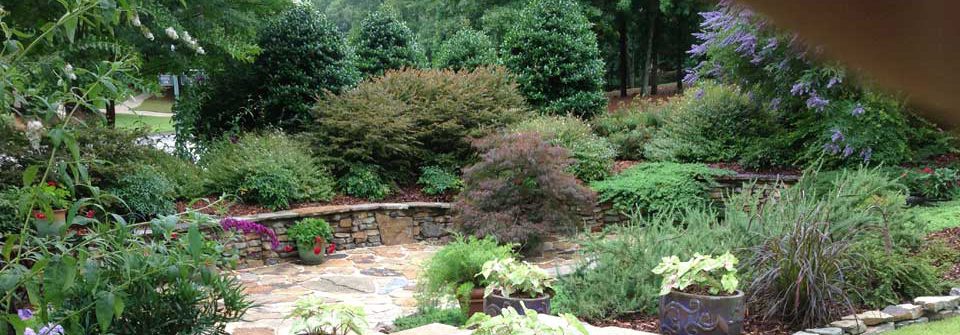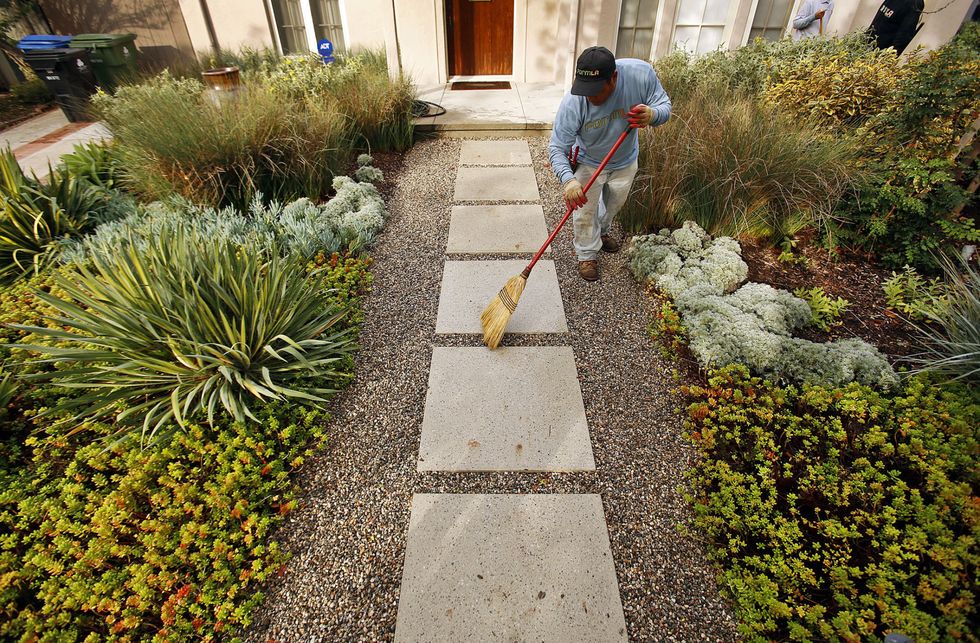Elevate Your Residential or commercial property's Visual With Lasting Landscape Design Styles and Eco-Friendly Practices

Benefits of Lasting Landscaping
Carrying out lasting landscape design practices not just preserves natural sources yet likewise promotes biodiversity and improves general ecological health. One substantial benefit is the reduction of water intake with the usage of drought-resistant plants, rainfall yards, and effective watering systems.
In addition, sustainable landscape design can improve soil health by lessening the use of chemical fertilizers and chemicals, thereby producing a healthier setting for plant development and advantageous soil organisms. This, in turn, boosts the overall resilience of the landscape to hold up against environmental stressors and climate modification effects - lawn cleanup Jacksonville. In addition, lasting landscaping methods can draw in varied wild animals, including pollinators like butterflies and bees, promoting an extra well balanced and lively ecological community within the residential property
Incorporating Native Plants
To build on the benefits of lasting landscaping, a calculated emphasis on integrating indigenous plants can better enhance environmental durability and advertise biodiversity within the landscape. Native plants are types that normally happen in a specific location and have actually developed to flourish in the local environment, soil conditions, and environment. By consisting of indigenous plants in landscape design layouts, homeowner can lower water use, reduce the requirement for chemical pesticides and plant foods, and sustain the regional wildlife populace.
Incorporating indigenous plants additionally assists in preserving the unique character and identity of a region's plants. These plants typically require less maintenance as soon as developed, making them a lasting and cost-efficient landscaping solution over time. Furthermore, native plants can draw in native pollinators like bees and butterflies, contributing to the total health and wellness of the community.
When picking native plants for landscaping jobs, it is necessary to pick species that are fit to the details ecological conditions of the website. Consulting with neighborhood nurseries or botanical yards can provide valuable support on picking the best indigenous plants for a specific area. By incorporating native plants right into landscaping designs, residential property owners can create beautiful, lasting outdoor rooms that profit both the environment and the neighborhood.

Water Preservation Methods
Efficient watering techniques play a vital duty in lasting landscape design methods, ensuring optimum water preservation initiatives in outside rooms. Carrying out techniques such as drip watering, rain harvesting, and smart irrigation systems can dramatically reduce water waste while keeping a healthy landscape. Drip watering provides water directly to the origins of plants, decreasing evaporation and overflow. Rainwater harvesting includes collecting rain from roofs and saving it for later use in watering, minimizing the try this dependence on local water sources. Smart watering systems utilize climate data and soil moisture levels to readjust sprinkling timetables, stopping overwatering and promoting water effectiveness.
In addition to innovative watering methods, xeriscaping is an additional water-saving landscape design strategy that concentrates on using drought-resistant plants, mulch, and efficient watering to produce a low-water landscape style - landscaping companies Jacksonville. By selecting native plants that are fit to the regional environment and dirt problems, home proprietors can reduce the requirement for too much watering, inevitably preserving water and promoting a sustainable outdoor setting
Eco-Friendly Hardscaping Concepts
Enhancing outside areas with environmentally friendly hardscaping functions can contribute considerably to lasting landscape design techniques. Choose for products like redeemed timber, recycled concrete, or all-natural stone to reduce ecological impact when thinking about hardscaping aspects. These materials not only include an one-of-a-kind visual attract your exterior area yet additionally reduce the need for brand-new resources extraction.
Applying permeable leading choices such as crushed rock or permeable concrete can assist lower water drainage and promote groundwater recharge. These choices permit rainwater to permeate right into the ground, stopping erosion and decreasing the burden on stormwater systems.
Incorporating indigenous plants into hardscaping layouts can better boost eco-friendliness by supporting regional wild animals and decreasing the demand for excessive watering or chemical therapies. By incorporating environment-friendly wall surfaces or vertical gardens, you can introduce more greenery right into city setups, improving air top quality and biodiversity.
Including energy-efficient you could try this out lighting, such as solar-powered LEDs, into hardscaping layouts can decrease power usage and lower your home's carbon footprint. Prioritizing environment-friendly hardscaping ideas not only boosts the elegance of your outdoor area but additionally demonstrates a dedication to ecological stewardship.
Maintenance Tips for Sustainable Landscapes

Frequently trim plants to advertise healthy growth and prevent overgrowth that can result in pest diseases or invasions. Usage natural plant foods to nurture the soil and plants without damaging chemicals that can leach into the Visit Website environment. For hardscaping components, such as permeable pavers or rock paths, consistently tidy them to avoid debris build-up and maintain their functionality. By staying positive with maintenance jobs, you can preserve the beauty and sustainability of your landscape for years ahead.
Verdict
In verdict, lasting landscape design practices use countless benefits for residential or commercial property owners, from enhancing the aesthetic allure of the surroundings to promoting ecological preservation. By integrating native plants, executing water conservation strategies, and making use of green hardscaping concepts, homeowner can produce stunning landscapes that are likewise eco responsible. With appropriate upkeep, lasting landscapes can flourish and add to a healthier ecological community for both human beings and wildlife.
Furthermore, lasting landscaping can boost dirt health by reducing the usage of chemical fertilizers and pesticides, consequently creating a healthier setting for plant development and beneficial dirt organisms.To build upon the benefits of sustainable landscape design, a strategic emphasis on integrating native plants can additionally enhance eco-friendly resilience and promote biodiversity within the landscape. By including native plants in landscaping styles, building owners can minimize water use, decrease the need for chemical pesticides and fertilizers, and support the neighborhood wild animals populace.
These plants frequently need less maintenance as soon as established, making them a cost-efficient and sustainable landscape design solution in the lengthy run. By incorporating native plants into landscaping designs, building owners can produce lovely, sustainable outside areas that profit both the area and the setting.